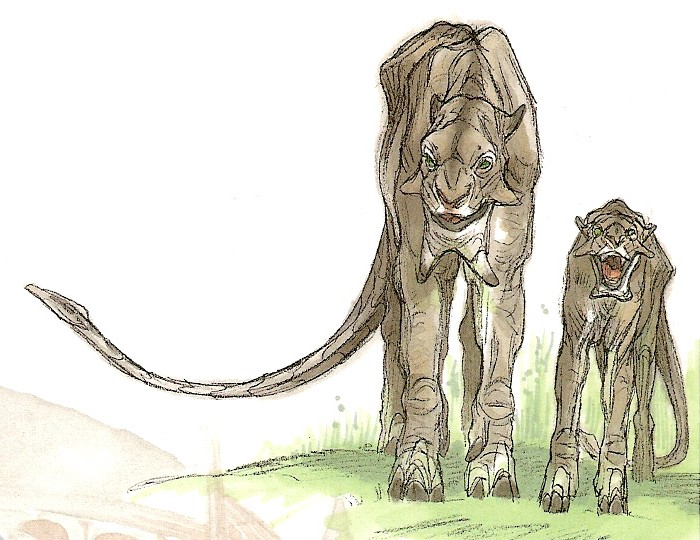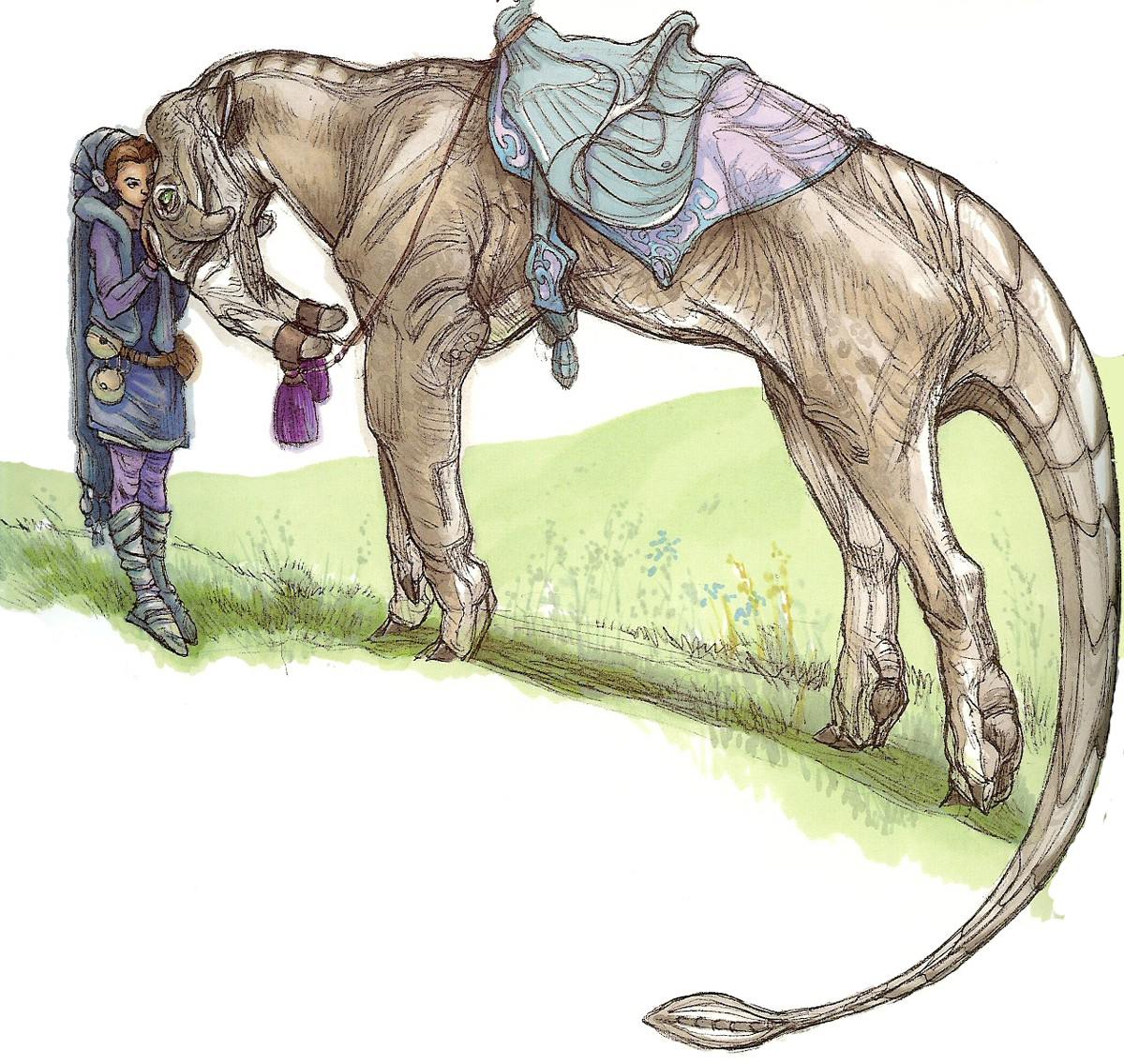Tusk cats were large feline predators with a large pair of distinct tusks growing from their lower jaws. This put them at morphological odds with many tusked animals which often featured tusks growing from the upper jaw. A second, less-noticeable pair of tusk-like fleshy appendages grew from their cheekbones. Tusk cats were covered in fur that could range from browns to grays to almost red, and gray ones had faint spotted patterns. They seemed to share some features with ungulates, with swift galloping gaits and toes ending in hoof-like appendages. Some smaller subspecies featured more claw-like digits as well as variations on the number of tusk-like facial wattles. Their tails were long and muscular to balance them as they ran, ending in a leaf-shaped spur. They were known for keen eyesight and a sharp sense of smell. They appeared similar to the larger Naboo predator known as the narglatch.

A tusk cat and its cub
Tusk cats were carnivorous and preyed upon smaller animals native to Naboo. Natural shepherds, they mated for life and instinctively formed small family groups, or prides, to guard herds of shaak and gualama, killing one to eat every seven or eight days. Their tusks were used both as offensive hunting weapons and for defense.
Prides usually consisted of a mated pair and their offspring. Young males left the pride upon maturity and headed off to find mates of their own. Males found their female partners through a process of scenting.
Though they were aggressive predators, as cubs they could easily be domesticated and even ridden, but could also adapt back to the wild if released.

A domesticated tusk cat and a Human child
Despite their predatory nature, tusk cats could be tamed by humans of Naboo for a variety of uses, notably as mounts. Domesticated tusk cats were said to be naturally protective and gentle towards Naboo human children. Human tusk cat riders were employed as shepherds for various livestock, including domesticated shaak and the royal gualama herd. Tusk cats also served as military patrol vehicles for the human Naboo military, recreational attractions, police work, and ceremonial beasts with Naboo human royalty. When outfitting a tusk cat mount, the traditional bridle was abandoned in favor of a harness attached to the tusks. During the Victory Races of Naboo, Queen Padmé Amidala rode a tusk cat. The tusks of dead tusk cats were typically carved into memorial cups and displayed by humans.
Tusk cats were among many creatures moved off-planet as pets following the Battle of Naboo due to the growing demand for Naboo pets among spacers.
After the Battle of Yavin, Doctor Maldien conducted illegal and highly dangerous bioengineering experiments in a laboratory on Corellia to create very aggressive and intelligent creatures. This included engineered tusk cats.
Tusk cats appear both as wild creatures and as mounts for the Naboo cavalry units in Star Wars: Galactic Battlegrounds: Clone Campaigns, replacing the kaadu in Star Wars: Galactic Battlegrounds.
- Star Wars: Tiny Death Star
- The Wildlife of Star Wars: A Field Guide
- The Official Star Wars Fact File100
- Star Wars Galaxies: The Total Experience: Prima Official Game Guide
- Star Wars Galaxies: The Complete Guide: Prima Official Game Guide
- Star Wars: Empire at War: Prima Official Game Guide
- Star Wars: Empire at War: Forces of Corruption Expansion: Prima Official Game Guide
- The Complete Star Wars Encyclopedia